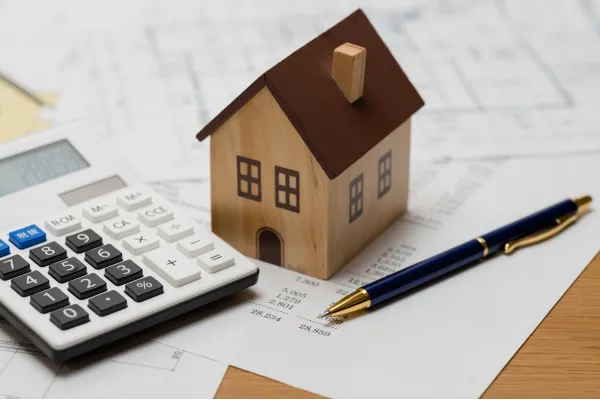
What Goes Into a Painting Estimate?
“When you are ready to refresh the look of your home, inside and out, just give us a call and we will walk through the whole process with you from start to finish.”
Introduction:
Painting your home can be cost effective, but you’ll need to know the basics before you get started in finding a professional. But the results can bring about a beautiful new feel to an old and worn out house.
Hiring a professional can vary widely depending on several factors that we’ll discuss here. Whether you’re looking to get a new look on your exterior or potentially a full interior repaint, understanding the what drives the cost will help you avoid any problems down the road.

Here are a 7 Considerations to think about and ask the professional when he is there for the on-site estimate.
1. Size Matters
Square footage to be painted is a very important aspect of the project. Prices are typically estimated based on the number of rooms and the square footage involved. You can expect to pay $3-$6 per square foot for interior jobs and $2-$4 per square foot for a full exterior project. This, of course, is assuming you are intending to hire a professional to get the job done.
A typical exterior paint job will cost around $4,000-$9,000. Being honest about your home’s size and features will help you have a realistic expectation for project costs. If you are living in a 4,000 sqft home your estimate will be on the upper end of the typical pricing and possible even more if you have a beautiful old victorian with lots of features.
2. Repair and Prep
In general, there is a lot more prep to be done than a homeowner realizes. It is the responsibility of the professional to help you understand what prep needs to be done and why. Most of the times, this involves repairing holes, cracks and dents, removing old wallpaper, sanding and degreasing surfaces, taping off areas, and laying down protection for floors and furniture, and possibly a good power wash to pull off any dirt and grime to ensure a good hold for the new paint.
The more repairs and prep required, the higher the labor costs will be. Fresh drywall or heavily stained surfaces may require additional coats or specialty primers, adding to material expenses as well.
3. Quality of the Paint
There is a vast range of paint types, sheens and finishes available, and their prices can differ dramatically. Lower quality flat paint may cost $20-30 per gallon, while high-end products with specialized finishes like lacquer can exceed $100 per gallon.
Anti-mold, anti-fading, and environmentally-friendly paints also command a premium. The sheen and number of coats required for coverage add to material expenses as well. Be very cautious about the paint that is being applied to your home. Higher cost paints have an much greater lifespan and ability to clean. Ask your professional what paints they intend to use and why.
4. Unique Home Features
Does your home have a variety of beautiful features that make it unique? Lots of dormers, trim around every window and edge, high and hard to reach spots? Homes with multiple stories, vaulted ceilings, trim details and unique architectural features are more difficult and time-consuming to paint.
Exterior siding types and articulated facades also increase complexity. Painters may need to erect scaffolding or use special equipment to reach difficult areas safely, adding labor costs. A simple ranch home is more cost-effective than multi-story homes.
5. Older Homes Can Be Challenging
If your home was built before 1978, there is a risk of lead-based paint that requires careful compliance with safety regulations for removal and containment. We don’t like it either, but the laws are on the books and we need to follow them.
Older plaster walls may need specialized repair techniques before painting. Historical properties must use period-appropriate colors and methodologies to preserve architectural integrity. All of these can inflate project costs substantially.
6. Prepping Yourself May Bring Trouble
Preparation Done by Homeowner or Painter Many painters will charge a lower rate if the homeowner has already completed some or all of the thorough preparation work themselves. This includes repairing holes, removing old wallpaper, cabinet/fixture removal, cleaning, and providing suitable coverings for floors and furniture. However, they often cannot guarantee the work if the prep was done incorrectly and may need to spend time to correct the mistaken prep. If you are not sure how to properly repair or prep, leave it to the professionals.
7. Timing of the Project
There are busy seasons for painters when costs tend to rise due to high demand, typically in the summer months. If your project can be scheduled in late fall or winter, prices may be appreciably lower as crews look to fill gaps in their schedule. Additionally, many painting companies offer discounts to book exterior projects well in advance to ensure availability.
Conclusion
When planning your interior or exterior painting project, be sure to go with someone you can trust. Someone that does not shy away from any question and will give you and estimate that includes all materials, prep work, coats of paint, and labor costs clearly itemized. Don't simply go with the cheapest bid, as these crews cut corners or tack on hidden costs. Keep in mind that higher quality paint and expert application may cost more upfront, but their improved durability and appearance can deliver better value in the long run. Preparation, access challenges, timing and finish selections can significantly impact the total cost of painting your home, so understanding all the factors involved is key to a successful project.
When you are ready to refresh the look of your home, inside and out, just give us a call and we will walk through the whole process with you from start to finish. You’re in good hands with Zoab Painting.
